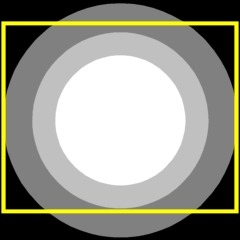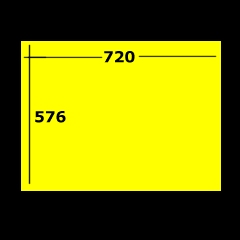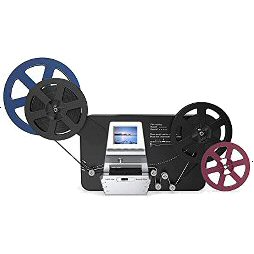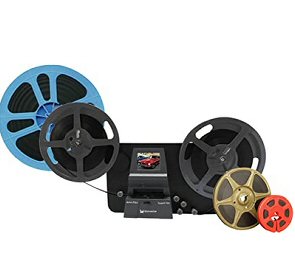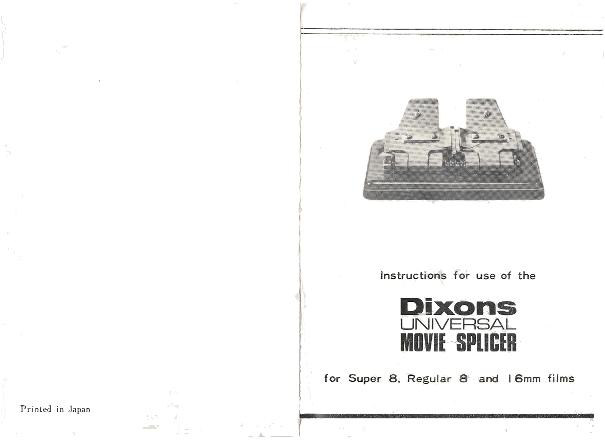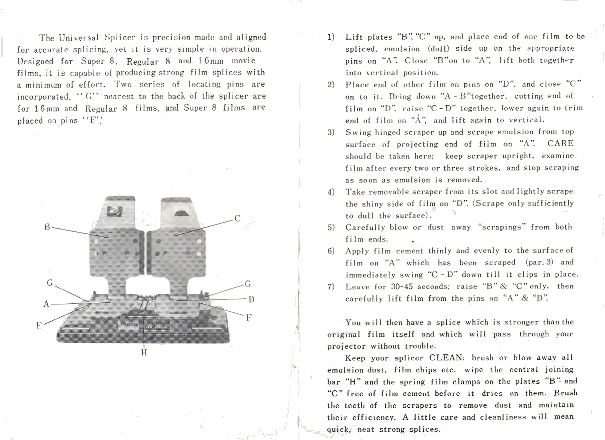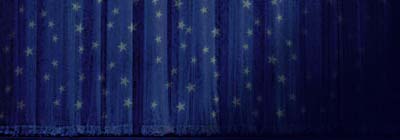
Computational Demonology
Light into Magick!
Bit of an odd name, eh? I think I bought the domain in 2014, or thereabouts, being a fan of the Laundry novels of Charles Stross (which IMNVHO are simply excellent). Anyway in 2012 I had a stroke at BBC Broadcast Centre, and while I kept working after a few months recovery, for several years, in the Video On Demand and video streaming industry . Mostly for BT Vision, Red Bee Media (hence the BBC, Channel 4, Channel 5, Amazon, Netflix, Virgin, and others). Then, after the stroke, my life priorities changed somewhat, and after a bit of contracting, I do stuff to keep my hand in with work and hobby related interests which sometimes coincide, much to my occasional regret... And I must observe that Telestream have been brilliant at making it possible for me to keep my hand in with top of the line encoding/transcoding software. |
|||||||||||||||||||||||||||||||||
| Test | 8mm and Super 8mm Film to Digital Media |
||||||||||||||||||||||||||||||||
There are basically two ways to convert from film to a digital format. Either you can project the film as normal, and film it with some kind of video camera, or you can use what's known as a telecine. A telecine scans each frame of the film individually and assembles tem into a movie. This produces a much superior result to simply filming the projected film.
The results can, for example, be uploaded to youtube, and/or written to a standard DVD. We can convert 8mm and Super 8mm cine film to any digital format you want (we should also be able to do 9.5mm in the next few months). We do not have the facilities to convert cine soundtracks at this time, but I'm looking into it. (See Sound). If you want to add a soundtrack, you can supply one on CD, cassette tape, or whatever media takes your fancy. Generally speaking we don't recommend a musical soundtrack because they tend to date terribly quickly. A standard prijector "click, click, click ..." is quite popular. Strobing! When one videos a projected cine film, one is usually recording at either 25 or 30 frames per second. Cine, however, is filmed and projected at a variety of frame rates. The important thing is that the rate at which the cine is filmed and projected differs from the rate at which it is videoed at. Now, as you know, a cine film is made up of individual frames. Each frame is separated from other frames by a frame border - basically a black line. When you film the projected cine, the camera picks this black line up and interprets it as a momentary dulling of the picture. The net effect is a perceptible light/dark flashing effect that we call "strobing". Dull Edges! When you project a cine film, the film is illuminated by a standard bulb. The light produced by the bulb tends to be circular, and the brightness level falls off the further you get from the centre of illumination. This is illustrated below:
The adjustable LED light source of some telecines avoids this problem, resulting in a high quality transfer Frame Cropping! Basically this problem is avoidable when videoing a projected cine film, but it's tricky to do well. The nature of the problem is that the frame size of your video camera differs from the frame size of the projected movie. Well, when I say "frame size," what I actually mean is "aspect ratio". So what's the aspect ratio? And why quibble? Essentially the "aspect ratio" is the ratio of image height to image width. Cine is generally 4:3, most films and TV these days is 16:9 The yellow rectangle illustrates the frame size and aspect ratio of most PAL digital cameras - it's a bit different for NTSC, or if you're using widescreen format, but the principle is the same.
In order to make sure that you video the whole projected cine image, you need to position the camera at a distance from the screen so that with the appropriate zoom setting you get the entire image without loosing either the vertical or horizontal edges. And then, of course you run into other problems to do with illumination levels, camera angle and so on. As I say, it can be done but it's damn fiddley and quite hard to get right. And these are some (by no means all) of the reasons why videoing projected cine film and then converting to whatever digital format is a bad idea, if you want a good result. The Telecine Approach
At ComputationalDemonology we use the "Telecine Approach," which means that we avoid all of the problems listed, and quite a few others, giving you the best possible cine conversion quality it's possible to get. As noted above, a telecine scans each frame of your cine film individually, with linear illumination giving excellent reproduction, and incidentally perfect frame rate conversion; remember cine is projected at around 18 frames per second, where as PAL DVDs play at 25fps. The frame rate problem is actually quite interesting (if you're that way inclined). The Downside Telecine operations are relatively slow; the machines we operate can handle 6 frames per second, and we prefer to run then at 4 fps to ensure the highest quality capture. That means our conversions take longer that simply filming the projected cine and converting from there. Prices We charge the same for standard 8mm and super 8mm cine conversions. Detailed prices are given below. The basic price is £35 per hour + £5 per reel. The reel charge is basically a species of self-defence. It's a real hassle to set up a telecine, and frankly I'd really rather not do it every 8 minutes. The moral of this is that you should - where possible - splice together your 3" reels into 5 " reels. We may be able to do this for you (for a fee, alas) in the not too distant future. The upside is that the fee will be less than the reel charge. But PLEASE DO NOT SPLICE YOU REELS TOGETHER if you are unpracticed at that kind of thing. I know this will cost you more but unless you know what you're doing this can lead to an inferior result, and might damage one of my telecines. The table below lists reel sizes and approximate running times. This should enable you to calculate the total cost of converting your cine films without too much hassle. But you may need a ruler!
Significant discounts are available for quantity. Prices include a menu of up to 6 items. If you have a photograph you'd like to use as the menu background, feel free to enclose it (no extra charge). Film CleaningYou've got to be careful with this! Not all cleaning solutions or cleaning methods are particularly friendly to old film. We use an ultrasonic cleaner, which removes a lot of grime without forceful manual intervention. The results are generally very good How long does it take? "Depends". Generally speaking you're looking at 1 to 3 weeks, but this depends on volume. One or two 5 " or 7" reels might be out next day, but 100 three inch reels would take longer. Possibly a lot longer. Please phone +44-(0)-7749 988913, or use the contact form for a more explicit quotation. Ordering. When you send us you cine films please try to bear the following in mind: It's not required but will make your job go more smoothly:
Rush Service "Rush Service" means next day, or the day after, delivery of the finished product. A "Rush Service" is available, but it's expensive. The exact charge varies a bit, but generally speaking where the rush service is possible (it may not be - availability depends on all kinds of things), you're looking at at least 100% surcharge on the basic fee. !I will splice up to 6 film breaks free of charge, more than that comes in at £2.50 a splice.
|
|||||||||||||||||||||||||||||||||

